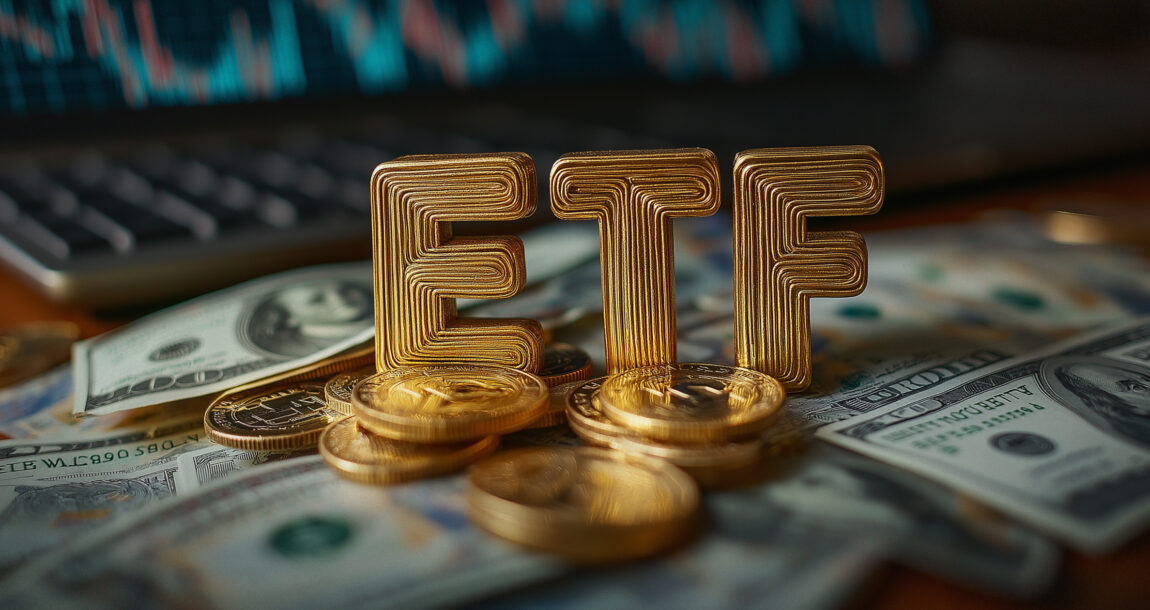ETF adoption strong among financial advisors, institutional advisors

More than two-thirds of financial advisors “always” or “often” recommend exchange traded funds (ETFs) to their clients, according to the State Street Global Advisors' 2024 ETF Impact Survey. A similar percentage of institutional investors (67%) also use ETFs in their investment strategies.
While less than half of all individual investors (45%) currently have ETFs in their portfolio, adoption by individuals was up from 40% in 2022 and appears poised for additional growth with more education, the report said.
Although fewer than half (45%) of individual investors have ETFs in their investment portfolios, nearly 70% of financial advisors recommend them to their clients “always” or “often” and 67% of institutional investors use them in their investment strategies “extensively” or “frequently,” said the survey.
Use by individual investors
The use of ETFs by individual investors is the highest among younger individuals, as 58% of millennial investors report they hold ETFs, compared to 47% of Gen Xers and 37% of baby boomers, the survey noted. The top reasons individual investors cite for holding ETFs in a portfolio include diversification benefits (49%), access to specific asset classes/exposures (47%) and lower costs/expense ratios (39%).
"There is still growing confidence that ETFs should be a core part of a diversified portfolio," said Anna Paglia, chief business officer for State Street Global Advisors. "The rapid growth and lower cost of ETFs since their introduction over 30 years ago have made it easier for people from all walks of life to become investors.”
Why some consumers do not own ETFs
Among individuals who do not own ETFs, a significant knowledge gap exists, with 71% reporting that their tax efficiency is difficult to understand, compared to 48% of ETF investors, the survey said. Similarly, more than two-thirds of investors (69%) who don’t own ETFs said that their pricing is difficult to understand (compared to 35% of investors) and more than half (57%) said that they have a difficult time in understanding the difference between mutual funds and ETFs (compared to 23% of investors).
“Despite their popularity, significant investor education still needs to be done to close the knowledge gap about ETFs,” said Paglia. “We know many investors are initially drawn to ETFs for their low cost, but more work needs to be done to raise awareness of all the financial advantages ETFs offer investors, beyond cost.”
Why advisors, investors recommend ETFs
So, why are so many advisors and institutional investors recommending ETFs to their clients? Since the launch of SPY, an SPDR S&P 500 ETF Trust) that launched 31 years ago, their use has grown rapidly, democratizing access to diverse asset classes and strategies as the great equalizer in the investment world, said Brie Williams, head of practice management, State Street Global Advisors. Despite widespread change, they have shown remarkable resilience and adaptability across diverse market conditions. “They are now the mainstream investment vehicle for hundreds of thousands of advisors, institutions and individuals, having amassed almost $11 trillion in assets,” she added.
As the ETF market has grown and evolved, so have the ways investors use them, added Williams. From indexed equity exposures to fixed income, active management, factor-based strategies and alternatives, ETF applications have expanded, enabling investors to achieve outcomes more efficiently.
Globally, institutions plan to maintain similar allocations in bonds and cash, with mixed views on increasing or keeping allocations the same for equities and alternative investments, added Williams. However, a decrease in cash allocations is anticipated, indicating a cautious yet strategic approach to asset allocation.
Most institutional investors ‘frequently’ or ‘extensively’ use ETFs in their investment strategies, citing liquidity as a key feature. “Other significant reasons include using them as core holdings for diversified exposures and for tactical asset allocation and market timing, indicating that flexibility and risk management are key drivers behind their use,” Williams added.
ETFs’ rapid rise and adoption over three decades, combined with high satisfaction across diverse investor segments globally, have made them a cornerstone of global finance, added Williams. Early adopters valued their cost-efficiency, liquidity, and transparency – benefits that remain central to their use today. “Individual investors favor ETFs for their diversification benefits, trading flexibility, and lower costs,” Williams said.
Education is paramount
Financial advisors recommend ETFs for various reasons, focusing on what matters the most to their clients. Advisors tend to emphasize cost efficiency, diversification benefits, trading flexibility, risk management and hedging purposes. “Furthermore,” Williams said,” the building block elements that ETFs provide offer the opportunity to uniquely structure customized portfolios when opportunities arise.”
With the growing adoption of ETFs among retail investors, the next focus for the industry is to reach this group, making education paramount, Williams pointed out. “There is tremendous choice in the marketplace today, from low-cost broad market ETFs like the SPDR Portfolio S&P 500 ETF (SPLG) to the expanding range of risk mitigation and income-oriented ETFs. To help investors tailor their portfolios effectively and meet their specific objectives, it’s crucial to educate them on the variety of ETF options available and how to strategically utilize them.”
What’s ahead
Meanwhile, the survey noted that many institutional investors (57%) and financial advisors (55%) are bullish, expecting the S&P 500 to post gains in 2024. Individual investors are less certain, however, with 44% predicting that the index will finish up, 31% expecting S&P 500 returns to be flat, and 15% anticipating it will finish the year in the red.
However, despite individual investors’ mixed outlook on the near-term performance of the stock market, when it comes to the long-term view of their own financial futures, they are decidedly more optimistic, the survey said. Eighty-four percent indicated they are optimistic about their own financial futures in the year ahead — up from 71% in Q4 2022. There is a similar gap in confidence among individual investors regarding their outlook for the country’s economic situation, with just 32% indicating they are optimistic about the economy in the year ahead.
The SPDR ETF Impact Report 2024-2025: The Next Wave of Innovation provides a comprehensive analysis of the global survey findings and SPDR’s top predictions on the future of ETF growth.
The survey was first conducted in 2022 and is designed to understand a wide range of investor attitudes and perceptions about ETFs, the market, and the economy.
The data reported focuses on findings for the US. State Street Global Advisors, in partnership with A2Bplanning and Prodege, conducted an online survey among individual investors, financial advisors and institutional investors. In the US, data was collected from April 1-25, 2024, from 1,000 adults 18+. It was then filtered for analysis among 319 individual investors with investable assets of $250,000 or more, 201 financial advisors with assets under management (AUM) of $25 million or more, with 90% with AUM of $50 million or more, and 100 institutional investors who are involved in the decision-making process for the AUM of $1 billion or more.
© Entire contents copyright 2024 by InsuranceNewsNet.com Inc. All rights reserved. No part of this article may be reprinted without the expressed written consent from InsuranceNewsNet.com.





How to help clients cope with the inevitability of death
Retiree health care costs rise to new high, study finds
Advisor News
- Athene Enhances Flagship Annuity Products, Expands Innovative Preset Allocation Feature
- Advisor gives students a lesson in financial reality
- NC Senate budget would set future tax cuts, cut state positions, raise teacher pay
- Americans believe they will need $1.26M to retire comfortably
- Digitize your estate plan for peace of mind
More Advisor NewsAnnuity News
- Athene Enhances Flagship Annuity Products, Expands Innovative Preset Allocation Feature
- GBU Life introduces Defined Benefit Annuity
- EXL named a Leader and a Star Performer in Everest Group's 2025 Life and Annuities Insurance BPS and TPA PEAK Matrix® Assessment
- Michal Wilson "Mike" Perrine
- Emerging digital annuity sales process cutting cycle times by 94%, IRI says
More Annuity NewsHealth/Employee Benefits News
- Krishen Iyer Sets Sights on a For-Profit Company
- UnitedHealth Group stock drops 22%, erasing $100B in market value
- UnitedHealth Group stock drops 22%, erasing $100B in market value, on lower earnings outlook, higher costs
- UnitedHealth Group stock drops 20% as it chops earnings outlook on higher medical costs
- No Waivers Needed for TRICARE Prime Users Outside Drive-Time Standard
More Health/Employee Benefits NewsLife Insurance News
- Citizens Inc. (NYSE: CIA) is a Stock Spotlight on 4/17
- IUL sales: How to overcome ‘it’s too complicated’
- Closing the life insurance coverage gap by investing in education
- MIB Group introduces first e-signature platform specifically for life insurance
- $184.2M financing secured for Seagis East Coast industrial portfolios
More Life Insurance News